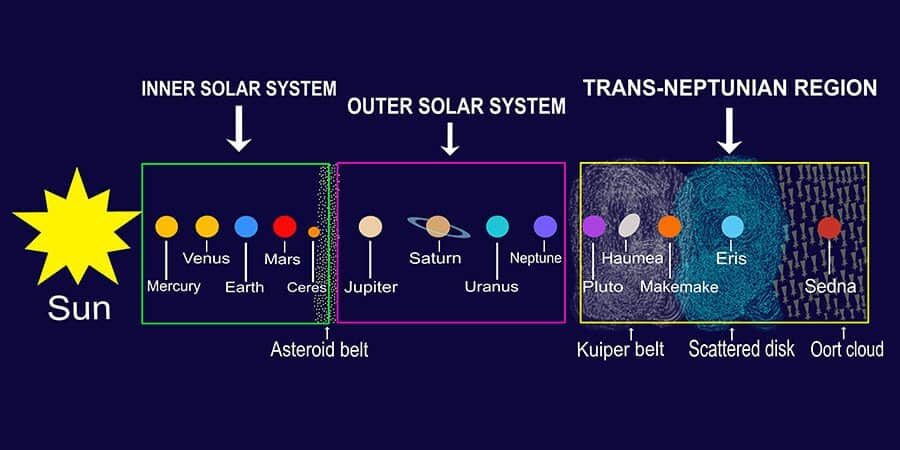10 Trans Neptunian Object Facts | Learn about TNO’s
If you’re looking to learn a little more about Trans Neptunian Objects, then you’re in the right place. These objects are located far away from our planet, and in fact, only one spacecraft has ever been launched with the intent to find a little more out about them.
And actually, some of the more common objects in our solar system, like meteor showers, can be made up of comets, which are originally TNOs. Let’s look at some interesting facts about Trans Neptunian Objects, or TNOs.
- A Trans Neptunian Object is just a name that we give to any object that is further out than Neptune within our solar system. However by definition, these objects must be in orbit of the Sun.
- Many of these objects are also described as KBOs, which stands for Kuiper Belt Objects.
- We classify any object that’s large enough in the Kuiper belt as a TNO. However, further out in the Oort cloud, these aren’t TNOs, as they don’t orbit the Sun.
- Between the Kuiper belt and the Oort cloud, there is also another region called the Scattered Disk – large objects here are classified as TNOs too.
- The first TNO to be discovered was actually Pluto, all the way back in 1930.
- The largest TNO is also Pluto, as well as the other dwarf planets, Makemake, Haumea and Eris.
- These larger TNOs orbit the Sun, but they’re also large enough to have their own orbit too. In fact, some of them even have moons that orbit them.
- The majority of TNO’s are thought to be comprised of a mixture of rock and ice.
- TNO’s can vary greatly in their color, with the majority being on a scale of blue to red, dependent on their temperature and composition.
- There has only been one space mission that was focussed on visiting a TNO, and that was the New Horizons mission, which flew by Pluto in 2015.
- Some TNOs are classified as ETNOs, which stands for Extreme Trans Neptunian Objects. An example of one of these is the planetoid, Sedna.
The distance from our planet, Earth, to the Sun is one astronomical unit, or AU. The distance from the Sun all the way out to the Kuiper belt is 30 AU, so thirty times the distance from us to the Sun.

The Kuiper belt is estimated to be around 10 AU thick, and the scattered disk beyond that could be as thick as 60 AU. The Oort cloud is estimated to begin at anywhere between 2,000 and 10,000 AU away, and is much vaster than the Kuiper belt.
Although there is no definitive answer, there are estimated to be between 50,000 and 70,000 different TNO’s out there in the solar system. All of these objects a have a minimum diameter of more than 100km.
Whilst large objects in the Oort cloud are beyond the reams of Neptune, these objects do not actually orbit the Sun (some closer objects may do, but we don’t think many do). We tend to refer to objects in the Oort cloud as OCOs (Oort Cloud Objects).
Yes, Pluto is the classic example of a trans Neptunian objects that lives beyond Neptune but still orbits around the Sun.
Ah, good question! Ceres actually is not a TNO, as it’s not located further than Neptune out in the Kuiper belt. It’s actually in the Asteroid belt, which lays between Mars and Jupiter. Ceres is the only dwarf planet currently classified that isn’t in the outer realms of the Kuiper belt.
Sedna is classified as a TNO, and is the closest large object that we know orbits the Sun. It’s very similar in size to dwarf planet, Pluto.
To sum it up, Trans Neptunian Object is just a name that we give to objects that are further out than the planet Neptune but still orbit the Sun. Although it is a catch all name, there are definitions that an object must meet to be classified as a TNO. Hopefully this has helped you learn a little more about these objects that make up part of our outer solar system!